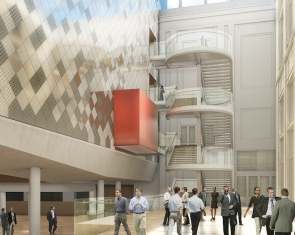Brussels, June 4, 2019 – A pioneer in the use of BIM (Building Information Modelling) through its “Building Systems” division, SPIE Belgium, a subsidiary of SPIE, the independent European leader in multi-technical services in the areas of energy and communications, plans to speed up its growth by rolling out this technology across all of its divisions in Belgium.
After 10 years of successfully experimenting with BIM, SPIE Belgium now intends to extend this working method to all its business units, to develop synergies between them and put forward a global approach which will set it apart on the market.
SPIE Belgium is based at 16 sites, each with its own way of working. The Building Systems Geel HVAC and Industry Geel divisions have led the way in experimenting with BIM, a process for creating and using a smart 3D model which enables teams to design, visualise, simulate and streamline exchanges.
For Senne Mentens, Business Development Manager at SPIE Belgium: “The great advantage of this way of working is to increase the efficiency of the employees and significantly improve the quality of the work done: thanks to the BIM and its 3D models, some welding can be done directly in the workshop and therefore, under optimal conditions, outside the usual hazards of a site (such as variations in temperature, humidity, etc.), without forgetting greater safety for employees.”
The Antwerp Port House, the success story of the Havenhuis
The Antwerp Port House, known in Dutch as the Havenhuis and the new head office of the Antwerp Port Authority, is one of SPIE Belgium’s benchmark projects relating to BIM. The subsidiary of the SPIE Group was awarded the piping for the entire building and technical facilities.
A number of SPIE Belgium business units used BIM to work together on this prestigious project, designed by the architect Zaha Hadid. The architectural complexity of the building – and the crucial schedule – called for optimum coordination of the various business areas, one of the major assets of BIM.
For Senne Mentens, the digital revolution increases the development potential of BIM: “With advances in data processing, I am certain that BIM will develop from an application facilitating coordination and prefabrication into a tool designed to optimise the Total Cost of Ownership (TOC) of projects, such as anticipating the assessment of the technical maintenance of a building. At SPIE Belgium, we are already primed to welcome this change.”





















